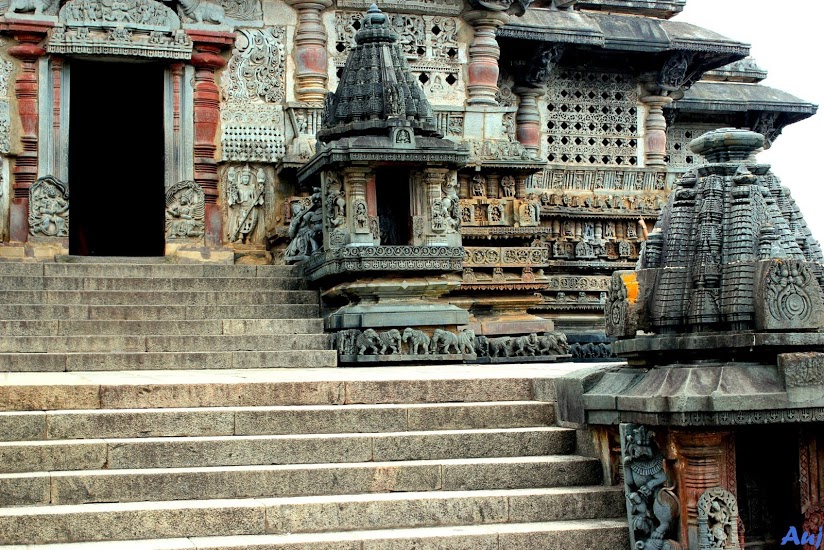Chennakeshava Temple, Belur, Karnataka.
This ekakuta temple positions itself as one of the masterpieces of Hoysala architecture. The temple's construction commenced in early 12th century by king Vishnuvardhana, when the town of Belur was the capital of Hoysala kingdom.
(Thread)
This ekakuta temple positions itself as one of the masterpieces of Hoysala architecture. The temple's construction commenced in early 12th century by king Vishnuvardhana, when the town of Belur was the capital of Hoysala kingdom.
(Thread)
The temple took over 3 generations and 103 years to complete. Chennakeshava temple is an ekakuta(single shrined) dedicated to lord Chennakeshava (Vishnu) with 3 entrances. The shrine has a large vestibule that connects to the mandapa. Each entrance has statues of dwarapalakas.(1)
The emergence of Chennakeshava temple is believed to be closely related to military achievements of the king who commissioned it in 1117 AD. Vishnuvardhana fought wars with Chalukyas to emerge triumphant and also defeated the Cholas.(2)
At the entry point of the vast temple complex, a massive rajagopura(tower) arches above the entrance. The temple sits in the centre, facing east. Constructed with soapstone, it is one of the earliest creations of the Hoysalas. At its highest, the temple stands 37 metres tall.(3)
On the outer walls of the temple one can observe dancing girls in various postures amongst other artworks. The Narasimha pillar is one of the popular temple pillars. There are a total of 48 temple pillars. The 4 central pillars feature madanikas(apsaras) in various poses.(4)
There are more than 80 madanika sculptures in the temple. The garbhagriha with its zigzag perforated walls makes the figures of 24 forms of lord Vishnu look different at different times of the day due to variations in light.(5)
It is considered that Shantaladevi, queen of Vishnuvardhana is the model for one of the sculptures. In the wall sculptures there are many depictions of events from Mahabharat & Ramayan. Animals which commonly feature in the wall sculptures include horses, elephants and lions.(6)
The doorways of the temple’s mandapa features a Hoysala chief slaying a tiger. This Hoysala state symbol is a representation of the defeat of Cholas, whose royal emblem was a tiger. The temple is set on a raised platform called Jagati.(7)
Some of the prominent sculptures of this temple are Gajasurasamhara (lord Shiva), Ravana and Mahishasur mardini. There are multiple mini shrines at the temple entrance. An intriguing observation is that many sculptures have signatures of Hoysala artists.(8)
There are 2 pillars (Garuda stambha and Deepa stambha) within the temple complex.The Chennakeshava temple complex comprises of 4 other smaller temples namely Kappe Chennigaraya, Ranganayaki (Andal), Veera Narayana and Saumyanaki.(9)
The mandapa on the west side leads to the garbhagriha. It enshrines the beautifully ornamented 6ft high idol of Lord Vishnu in his chaturbhuj mudra with a halo, standing on a 3 ft pedestal.(10)

 Read on Twitter
Read on Twitter























